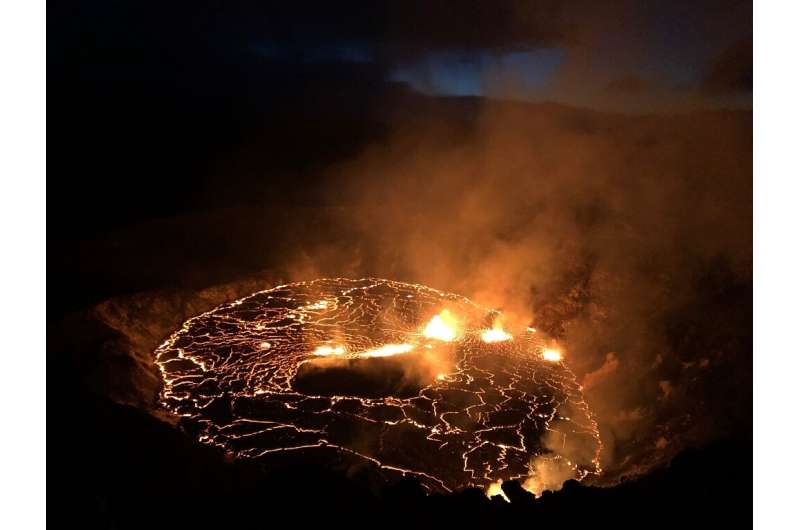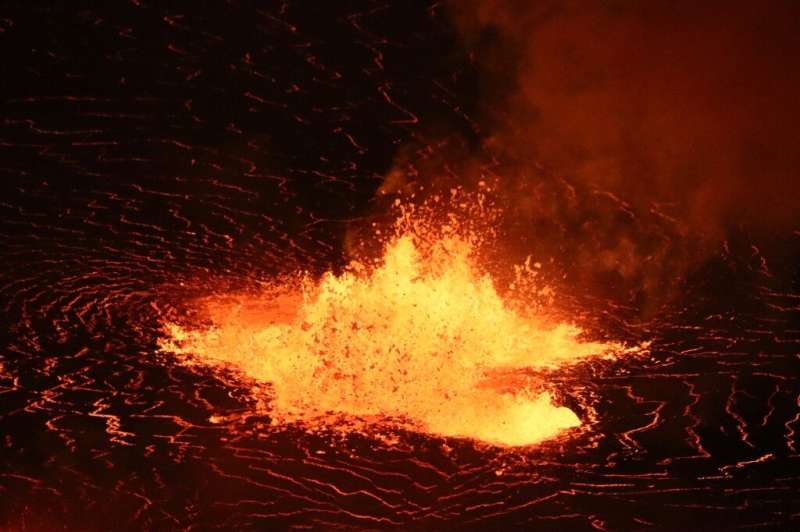Hawaii's Kilauea Volcano is seen erupting, with fountaining at multiple fissure locations on the base and west wall of the crater, in a photo provided by the US Geological Survey.
Hawaii's Kilauea volcano, one of the world's most active, has erupted but its lava so far is limited to its central crater and not threatening inhabited areas, authorities said Thursday.
Lava fountains began appearing Wednesday on the surface of the crater's lava lake and have reached the "height of a 5-story building," the US Geological Survey wrote on Twitter
Cracks first appeared in the Halema'uma'u crater earlier Wednesday and very quickly gave way to the lava fountains, which at times exceed a temperature of 1,100 degrees Celsius, the USGS said.
The eruptions that have regularly rocked Kilauea since the 1950s have made it a popular destination for tourists.
Officials at Hawaii Volcanoes National Park, where Kilauea is located, have begun mobilizing staff to cope with an expected influx of visitors.
"We do expect visitation to increase as the word gets out and spread through the weekend," Hawaii Volcanoes National Park spokeswoman Jessica Ferracane told the Honolulu Star.
Kilauea does not present any immediate danger but the USGS said it "continues to monitor the volcano closely" because the beginning of eruption phases "are dynamic and uncertain."
Kilauea is one of the five volcanoes on the island of Hawaii, the largest in this Pacific archipelago.
Eruptions such as the one seen here in a photo provided by the USGS in September 2021, have regularly occurred at Kilauea Volcano since the 1950s.
In 2018, a Kilauea eruption destroyed several hundred homes. About 20 people who took a boat trip to watch the magma flow into the sea were injured, including one seriously, by a jet of lava.
© 2021 AFP

























